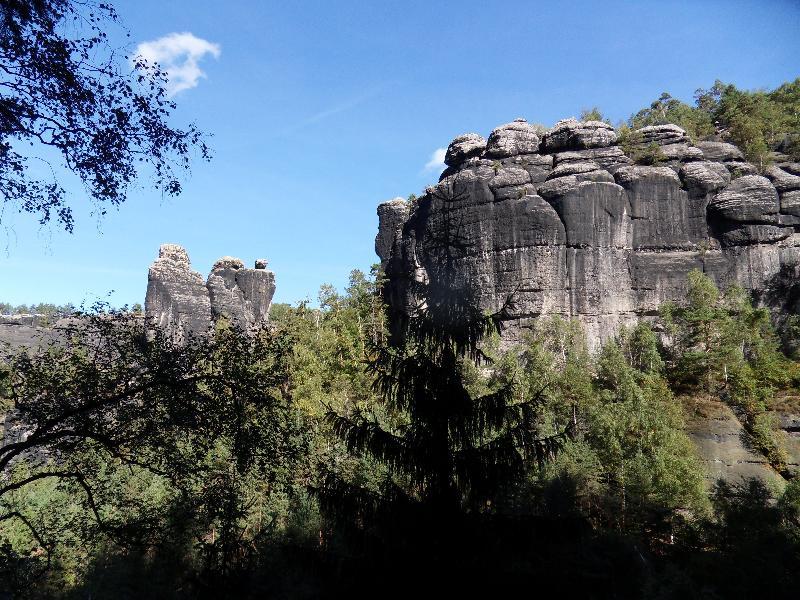 © Romy Friebel / Travanto
© Romy Friebel / TravantoSaxon Switzerland (Sächsische Schweiz)
The name Saxon Switzerland refers to the Saxon part of the Elbe Sandstone Mountains. This vacation area was first opened to tourists in 1766 and has since captivated many artists, including the Romantic era painters, Ludwig Richter or Caspar David Friedrich. The Sächsische Schweiz National Park is today one of the most popular tourist destinations in Saxony. Saxon Switzerland can be explored in many different ways. Hiking and boat excursions are possibilities, just as are climbing trips. The tourism center of the region is Bad Schandau. This spa town on the shores of the Elbe River profits from its mineral springs, rich in iron. Especially idyllically located are the town quarters of Postelwitz and Ostrau, which can be reached by elevator.
Saxon Switzerland has an impressive natural landscape. Not far from the Rathen spa there is the rocky ridge of the Bastei. This labyrinth of gorges offers magnificent vistas. A variety of performances are offered on the Rathen Open Air Stage. This largest natural stage in Saxony is embedded in the Wehlgrund and provides the coulisse of the annual Karl May Festival. High above the Elbe valley the Königstein Fortress arises, the largest landmark of Saxon Switzerland. The imposing layout was designed in about 1200 as a Bohemian Königsburg and was never conquered. The fortress disposes of several museums focusing on the military history of Saxony. An interesting experience is also a trip with the nostalgic Kirnitzschtal Tramway, which carries visitors to the artificially created Lichtenhain Waterfall.
Saxon Switzerland has an impressive natural landscape. Not far from the Rathen spa there is the rocky ridge of the Bastei. This labyrinth of gorges offers magnificent vistas. A variety of performances are offered on the Rathen Open Air Stage. This largest natural stage in Saxony is embedded in the Wehlgrund and provides the coulisse of the annual Karl May Festival. High above the Elbe valley the Königstein Fortress arises, the largest landmark of Saxon Switzerland. The imposing layout was designed in about 1200 as a Bohemian Königsburg and was never conquered. The fortress disposes of several museums focusing on the military history of Saxony. An interesting experience is also a trip with the nostalgic Kirnitzschtal Tramway, which carries visitors to the artificially created Lichtenhain Waterfall.
